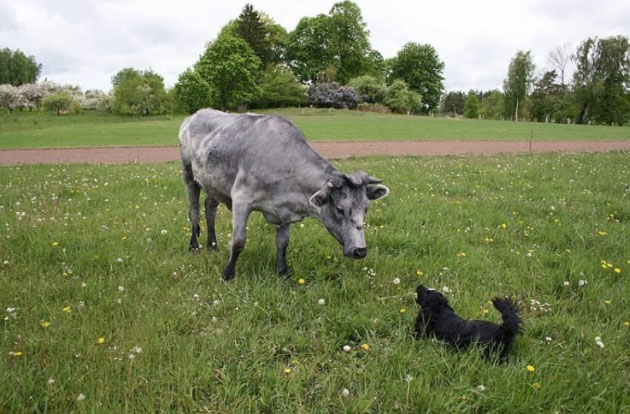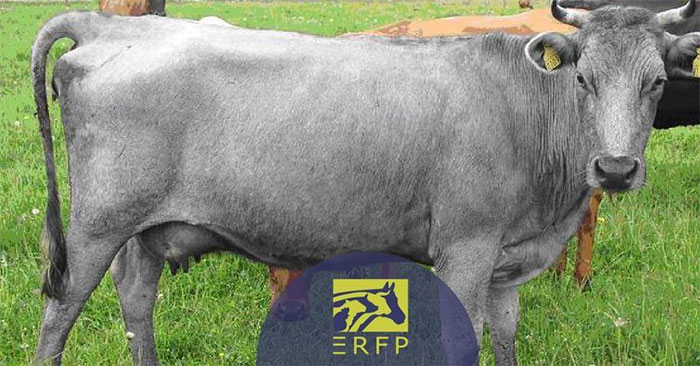Once on the brink of extinction, the Blue Cattle have made a remarkable comeback over the past few decades, becoming an irreplaceable cultural symbol of Latvia.
Initially found only along the Baltic Sea in the Kurzeme region, these cattle, with their light or dark blue coats, have grazed across the rural landscapes of Latvia.

The unique breed of cattle is considered a symbol of national identity.
In the past, they were nearly extinct, with only a few specimens remaining after a period of destruction. In fact, by the year 2000, there were only 18 Blue Cattle left in Latvia, but today their numbers have risen to about 1,500. This unique breed is now seen as a symbol of national identity.
Legend has it that the Blue Cattle derive their color from the sea, but in reality, they are born beige and gradually change color over time. Their coats soon turn blue and darken as the years go by.
The pigment that gives the cattle their deep blue color also affects their meat. The beef is notably dark. Latvian Blue Cattle produce less milk, averaging 5,000 liters per cow per year, but their milk is healthier and more nutritious.

Strong, independent, and robust Blue Cattle can live outdoors year-round.
The trend of replacing Latvian Blue Cattle with more conventional breeds that yield more meat and milk was one of the reasons for their near extinction.
Fortunately, they have been brought back from the brink. In the 1970s, Latvian playwright Gunars Priede debuted the play The Blue One, a resounding success that brought the Latvian Blue Cattle back into public consciousness and turned them into a symbol of national identity. By 2006, the Blue Cattle Association was established, primarily aimed at saving this unique breed.
Today, rural innkeepers purchase Blue Cattle as a way to attract tourists, while farmers often include blue heifers in their herds due to their strong maternal instincts.
Arnis Bergmanis, head of the Ciruli Animal Park in Kalvene village, stated: “If a calf of any color loses its mother or is separated, the blue cow will take it in and raise it as her own.”
According to Daiga Simkevica, head of the Blue Cattle Association, they are also known for their ability to thrive in harsh conditions. The Blue Cattle, which graze along the coast, exemplify a remarkable resilience, surviving on shrubs and coarse grasses that other livestock consider inedible.
“The strong, independent, and robust Blue Cattle can live outdoors year-round, even during winter frosts, which many other livestock breeds cannot endure,” Daiga Simkevica remarked.


















































